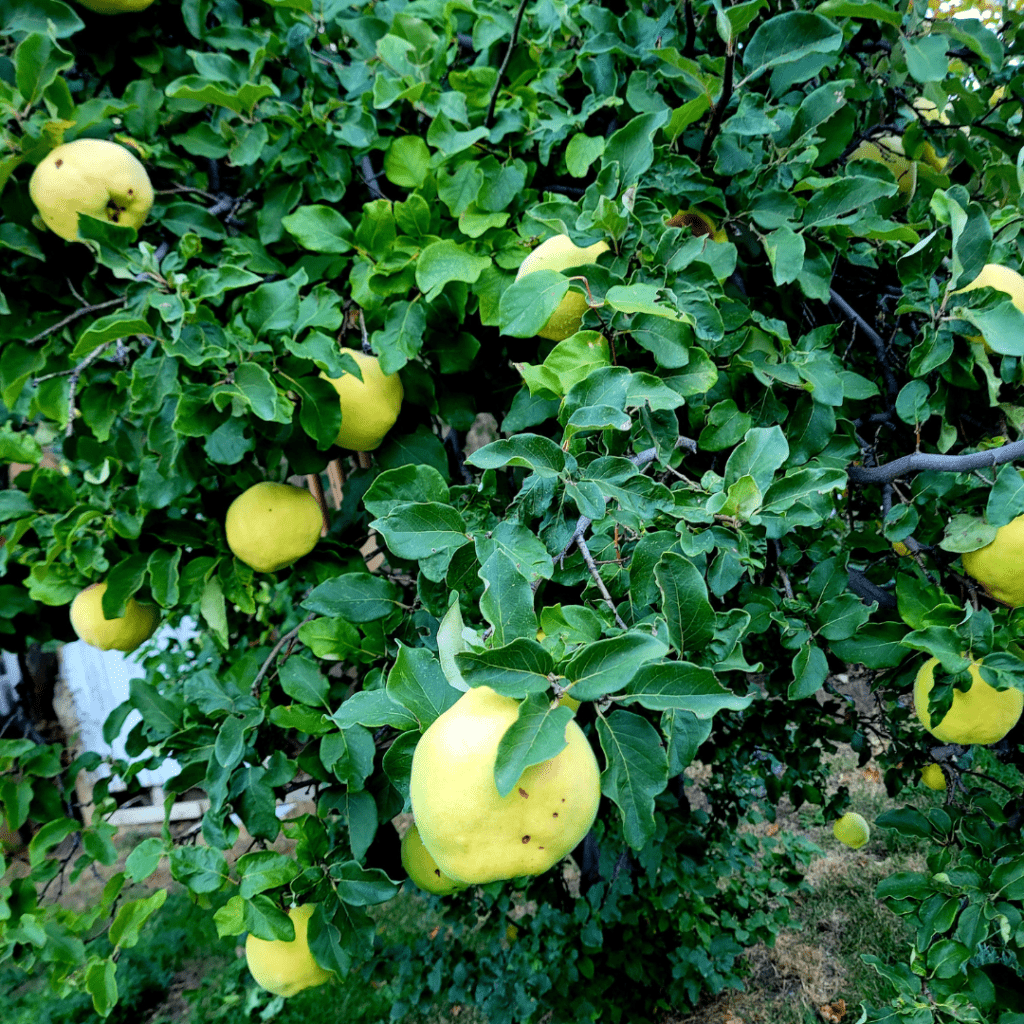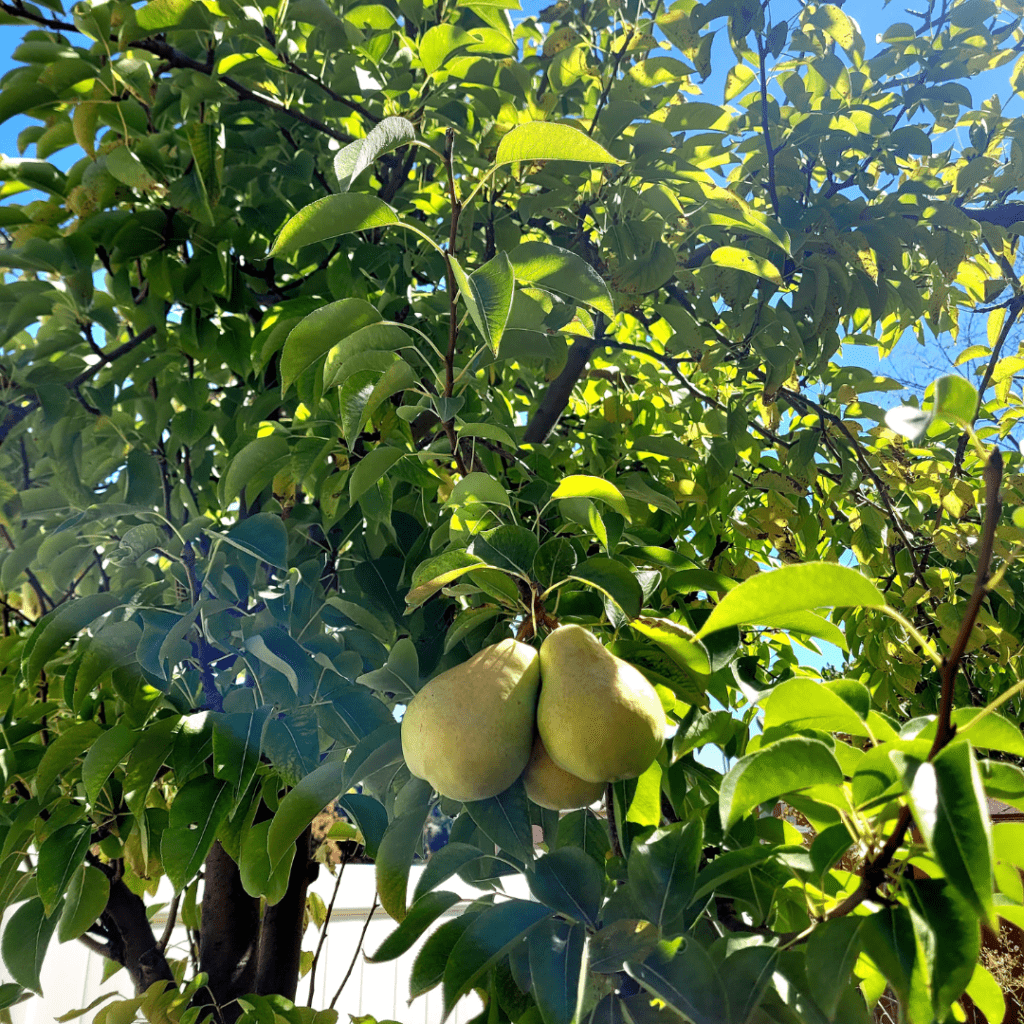Discover everything you need to know all about cherry trees in this ultimate guide — from choosing the best cherry tree varieties for your climate to planting, pruning, and harvesting tips. Whether you’re growing sweet cherries or tart pie cherries, learn how to care for your trees year-round and enjoy bountiful harvests for years to come.
Cherry trees have always been a favorite of mine, not just for their beauty, but for the delicious fruit they produce. Watching their vibrant blossoms in the spring and enjoying the bountiful harvests in the summer is something I look forward to every year in my backyard orchard.
In this guide, I’ll share everything I’ve learned about cherry trees, from the different varieties to how to choose the right one for your garden. I’ll cover planting and care tips, pruning and training techniques, ways to tackle common pests and diseases, and advice on harvesting and enjoying the fruits.
Whether you’re an experienced gardener or just starting out, this guide will give you the knowledge and confidence to grow and cherish your own cherry trees.
This is a pinnable post. Tap or hover over any image in this post to pin to your Pinterest Boards.
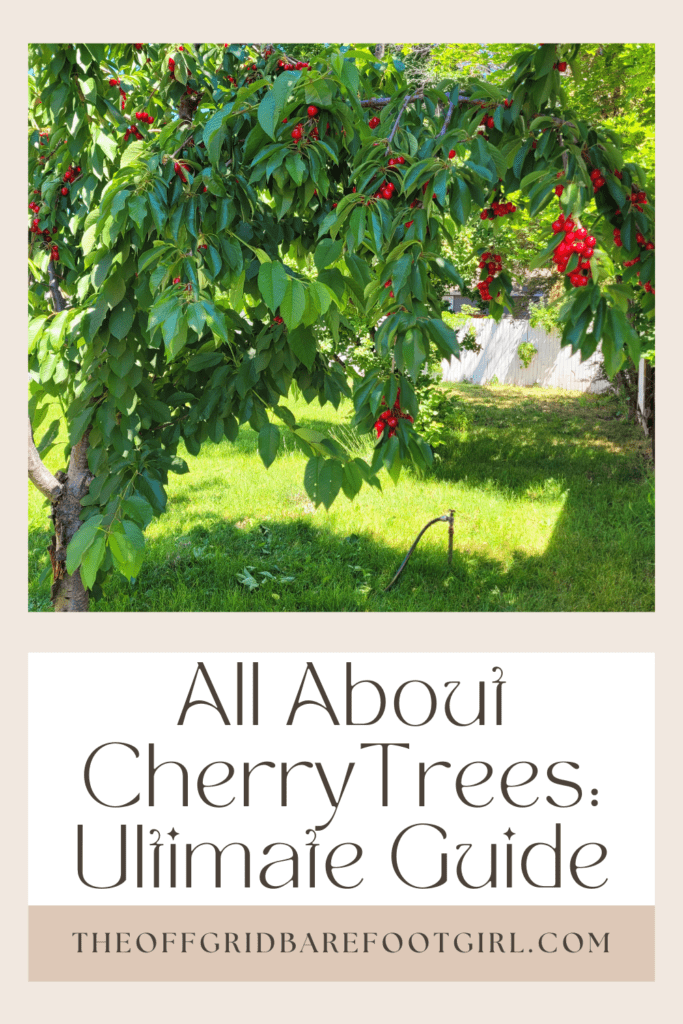
Introduction to Cherry Trees
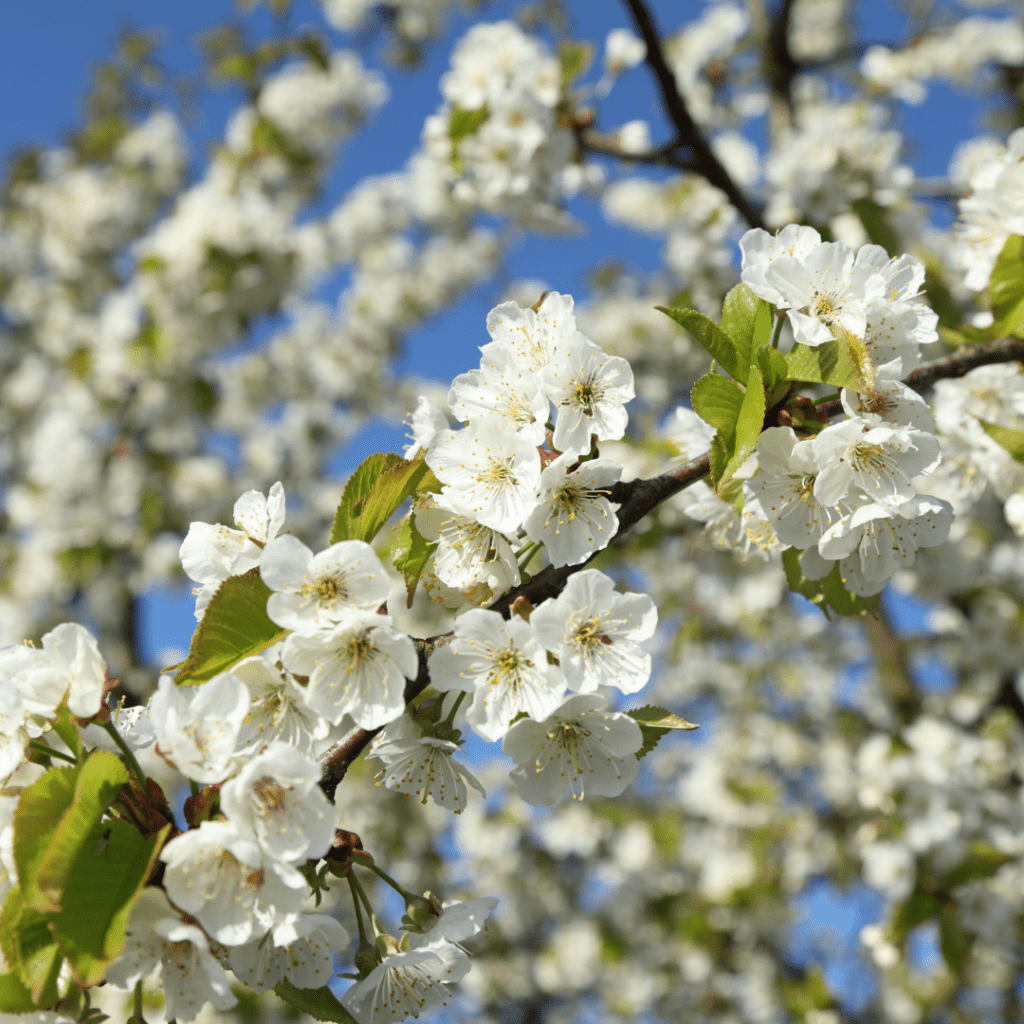
What Are Cherry Trees?
Cherry trees are magical beings that bring us juicy, luscious cherries. They belong to the Prunus genus and are part of the Rosaceae family. From their lovely blossoms in spring to their delicious fruits in summer, cherry trees are a delightful addition to any garden.
Cherry trees bring delight to the garden from their gorgeous spring blooms to the delicious, bountiful fruit that follows. You can be sure to be given a huge harvest from your cherry tree, so be prepared to learn how to preserve them and devour some cherry recipes.
A Brief History of Cherry Trees
Cherry trees have a rich cultural and historical background, dating back thousands of years. They were initially cultivated in ancient Mesopotamia and later spread to Greece and Rome. The blossoming cherry trees have been admired and celebrated in Japan for centuries, symbolizing the transient beauty of life.
Significance of Cherry Trees
Besides their enchanting beauty, cherry trees hold special significance in various cultures. In Japan, the blooming of cherry trees marks the arrival of spring and is celebrated with Hanami, the traditional custom of enjoying the beauty of cherry blossoms. Cherries, often associated with love and romance, have become a popular symbol of Valentine’s Day in many parts of the world.
Different Varieties of Cherry Trees

Sweet Cherry Varieties
If you have a sweet tooth, then sweet cherry varieties are your perfect match! Some popular sweet cherry varieties include Bing, Rainier, and Stella. These cherries will add a burst of sweetness to your summer picnics and desserts.
Sour Cherry Varieties
For those who prefer a tangy twist, sour cherry varieties are the way to go. Sour cherries, such as Montmorency and Morello, are excellent for making pies, preserves, and even sour cherry lemonade. They bring a zesty punch to your culinary creations.
Popular Hybrid Cherry Varieties
Hybrid cherry varieties offer the best of both worlds. They combine the sweetness of sweet cherries with the tartness of sour cherries. Some popular hybrid varieties include the Lapins, Sweetheart, and Sonata. These cherries provide a delectable balance of flavors for all taste preferences.
Choosing the Right Cherry Tree for Your Garden
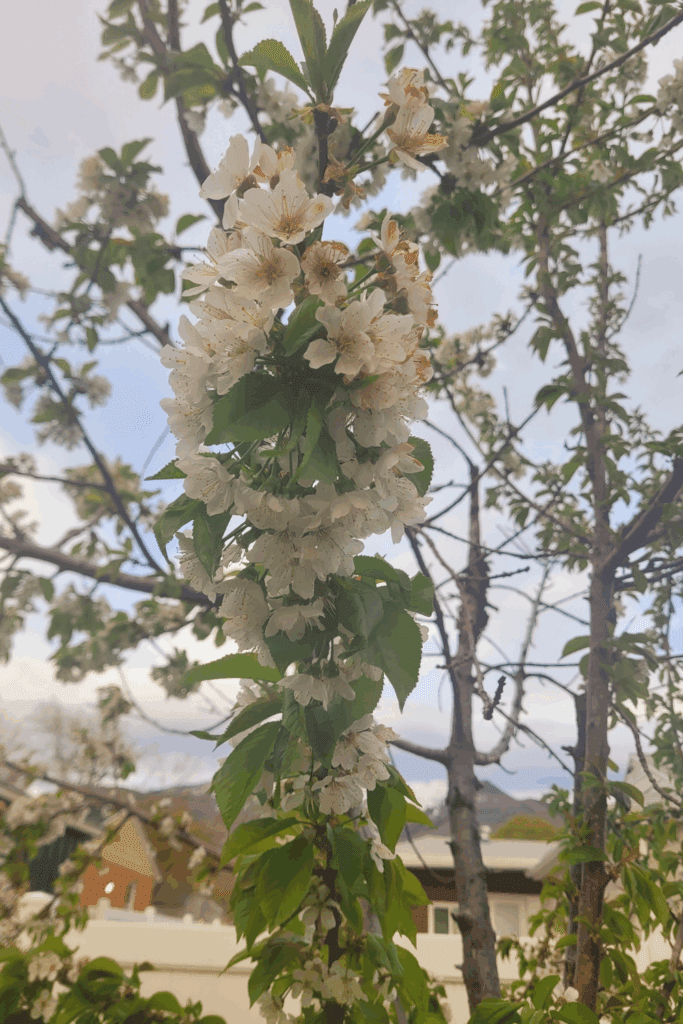
Considerations for Selecting a Cherry Tree
When choosing a cherry tree, consider factors such as the available space in your garden, the desired fruit flavor, and the climate in your region. It’s important to select a variety that suits your taste preferences and growing conditions.
Cherry Tree Size and Spacing Requirements
Cherry trees come in different sizes, ranging from dwarf varieties suitable for small gardens to larger ones better suited for spacious landscapes. Pay attention to the recommended spacing between trees to ensure proper growth and access for maintenance.
Climate and Soil Preferences for Cherry Trees
Cherry trees thrive in temperate climates with cold winters and moderate summers. They prefer well-drained soil with a pH level between 6.0 and 7.0. Consider your climate and soil conditions to choose a cherry tree that will thrive in your garden.
Planting and Caring for Cherry Trees
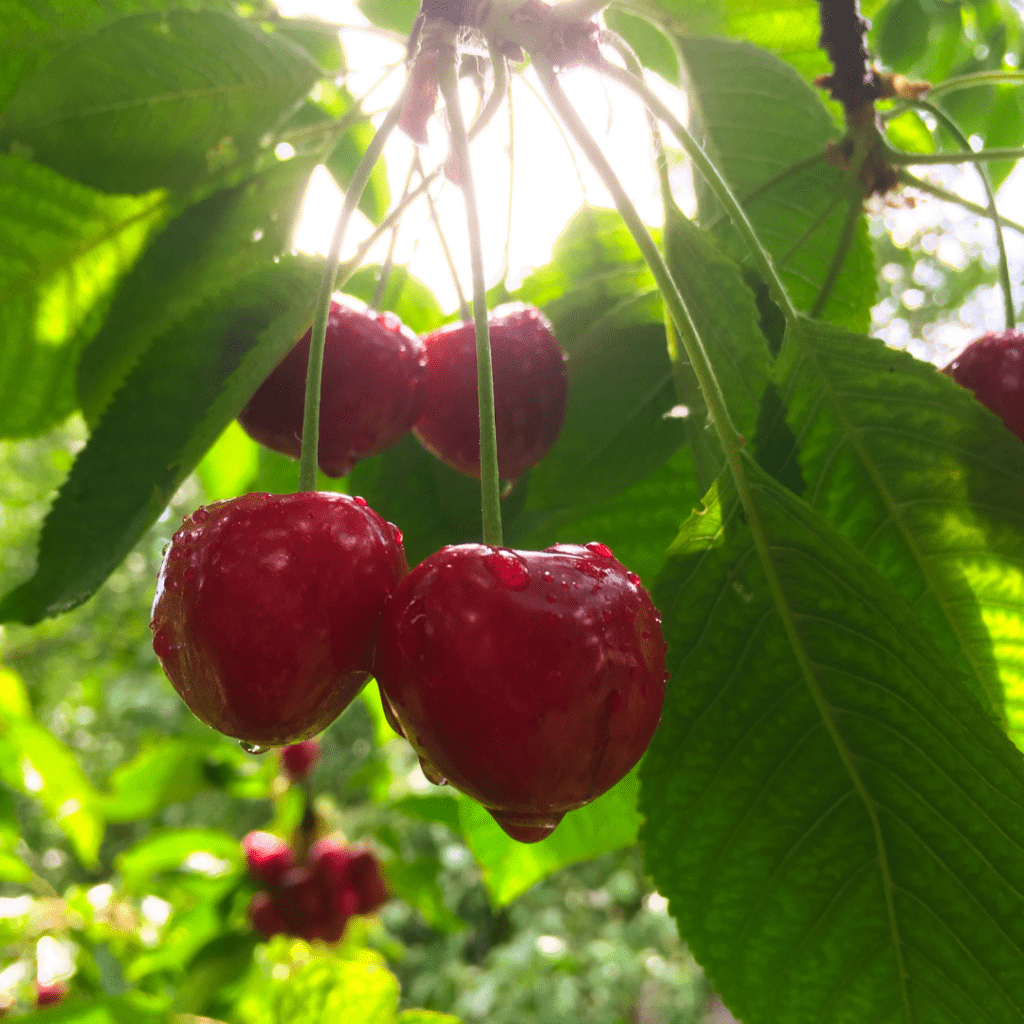
Preparing the Planting Area
Before planting your cherry tree, ensure that the selected spot has adequate sunlight and proper drainage. Clear the area of weeds and grass, and loosen the soil to assist with root penetration. Cherry trees appreciate a well-prepared foundation for their roots to spread comfortably.
Planting Techniques for Cherry Trees
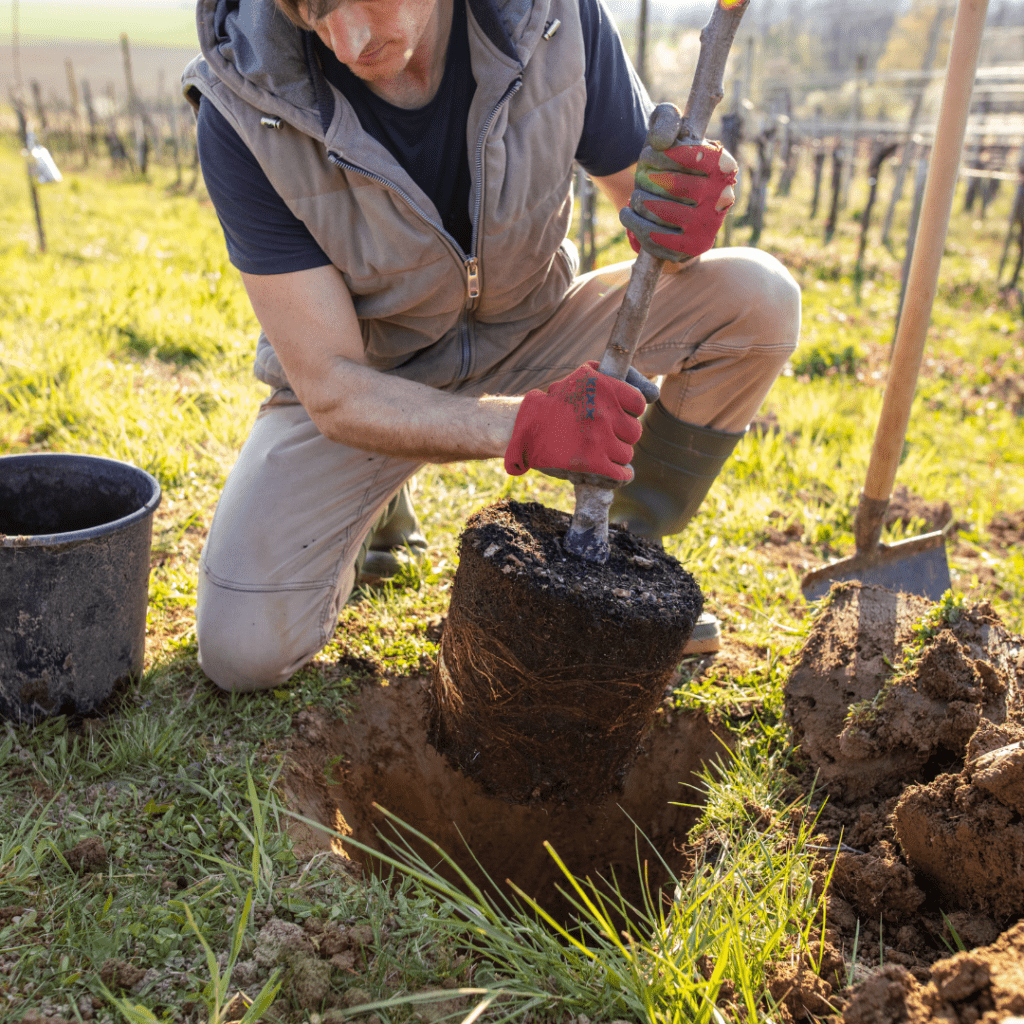
When planting your cherry tree, dig a hole wide and deep enough for the rootball to fit comfortably. Spread the roots outward and backfill the hole with soil, ensuring the tree is planted at the same depth as it was in the nursery. Water thoroughly after planting to settle the soil around the roots.
Watering, Fertilizing, and Mulching Cherry Trees
Cherry trees need regular watering, especially during dry periods, to ensure their roots stay hydrated. Apply a slow-release fertilizer in early spring to nourish the tree. Mulching around the base of the tree helps retain moisture, suppresses weed growth, and protects the roots from extreme temperatures.
Pruning and Training Cherry Trees
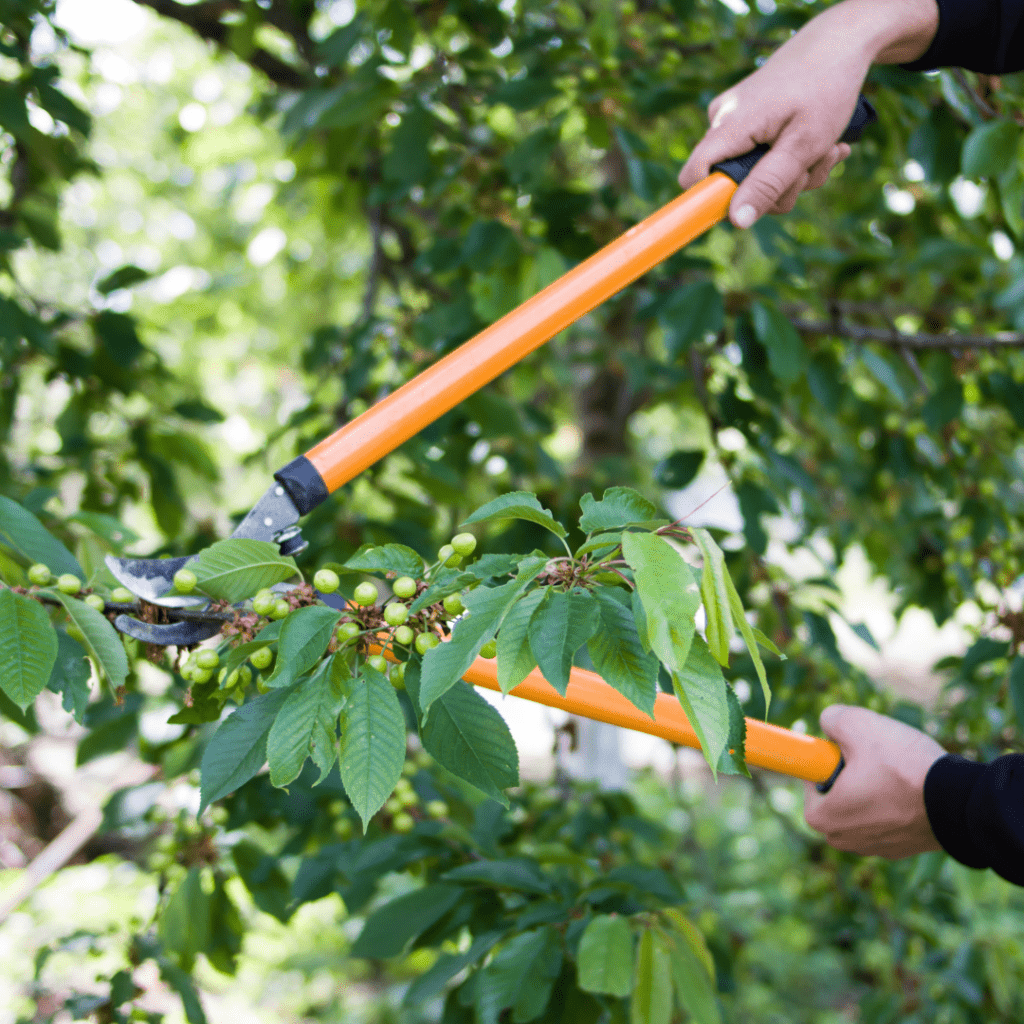
Importance of Pruning Cherry Trees
Pruning cherry trees may sound intimidating, but it’s actually a crucial step in ensuring healthy growth and a bountiful harvest. Think of it as giving your cherry tree a stylish haircut while also promoting its overall well-being. By removing dead or diseased branches, you prevent potential pests and diseases from wreaking havoc.
Pruning also helps shape the tree and improve airflow, reducing the risk of fungal infections. So grab your pruning shears and get ready to give your cherry tree a makeover!
Pruning Techniques for Young Cherry Trees
When it comes to young cherry trees, the goal is to establish a strong framework that will support their growth in the future. Start by removing any dead, damaged, or crossing branches. Aim for an open center shape, allowing sunlight to reach all parts of the tree.
Be careful not to go overboard and prune too aggressively, as this can stunt its growth. Remember, a gentle touch and a little patience go a long way in nurturing your young cherry tree.
Training and Shaping Mature Cherry Trees
Mature cherry trees require a slightly different approach when it comes to pruning. It’s all about maintaining their shape and maximizing fruit production. Start by removing any dead or diseased branches, as well as any that are overcrowded.
Thin out the branches to ensure good airflow and light penetration. And don’t forget to give your tree a nice, balanced shape while you’re at it!
Common Pests and Diseases of Cherry Trees
Identifying and Preventing Common Cherry Tree Pests
Cherry trees, like all plants, have their fair share of enemies. From aphids to Japanese beetles, these pesky critters can wreak havoc on your beloved trees. Keep a close eye out for any signs of infestation, such as distorted leaves or sticky residue.
To prevent these pests from turning your cherries into their personal buffet, you can try using natural insecticides or introducing beneficial insects like ladybugs. And remember, a little bit of vigilance goes a long way in keeping your cherry tree pest-free.
Common Diseases Affecting Cherry Trees
Just like humans, cherry trees can fall victim to various diseases. Brown rot, leaf spot, and bacterial canker are just a few of the culprits that can cause your tree to wither and suffer. To keep your cherry tree in good health, it’s important to practice good sanitation and proper watering techniques.
Regularly remove any fallen leaves or fruits that may harbor disease. And please, don’t give your cherries a shower (they hate it), water the soil instead!
Pests and Diseases of Cherry Trees
Birds love cherries. They can quickly do some drastic damage to cherry trees if no action is taken.
- Keeping your cherry tree covered with netting helps prevent birds from snacking on your precious cherries. However, I never net my cherry tree because I still get plenty of cherries for my family, and I do not mind sharing with nature.
White worms are fruit fly larvae that can invade cherry trees and infest the developing cherries in May. To help prevent an infestation of your cherry tree, there are some simple steps you can take.
- I grow organically, so I spray my tree with organic spray in the spring. This is the first step I take in successfully combating this problem for my cherry tree.
- Next, keep the ground area of the cherry tree clean from fallen rotten cherries and keep them raked up to prevent infestation inhabiting the rotten fruit.
- Another effective treatment to prevent an infestation is to plant garlic around the cherry tree. Garlic is a natural pest deterrent since insects do not like the smell of garlic. I keep a nice circle of planted garlic around all my fruit trees to keep a protective barrier from damaging insects from entering the fruit tree’s space.
- Do not overspray your cherry tree with the sprinkler system. Over-spraying the cherry tree in warm spring weather can invite pests to begin infesting the developing fruit. Water from the ground only.
- When all else fails, hang up fly traps and tape to the tree. (I implement all of these practices in my backyard orchard for effective pest and disease control).
Treatment Options for Pests and Diseases
If pests or diseases do manage to invade your cherry tree paradise, fear not! There are treatment options available to help you combat these problems. From organic sprays to fungicides, you can find remedies to suit your preferences and the severity of the issue.
Just make sure to read the instructions carefully and follow the recommended dosage. Your cherry tree will thank you for your swift action and dedication to its well-being.
Harvesting and Enjoying Cherries
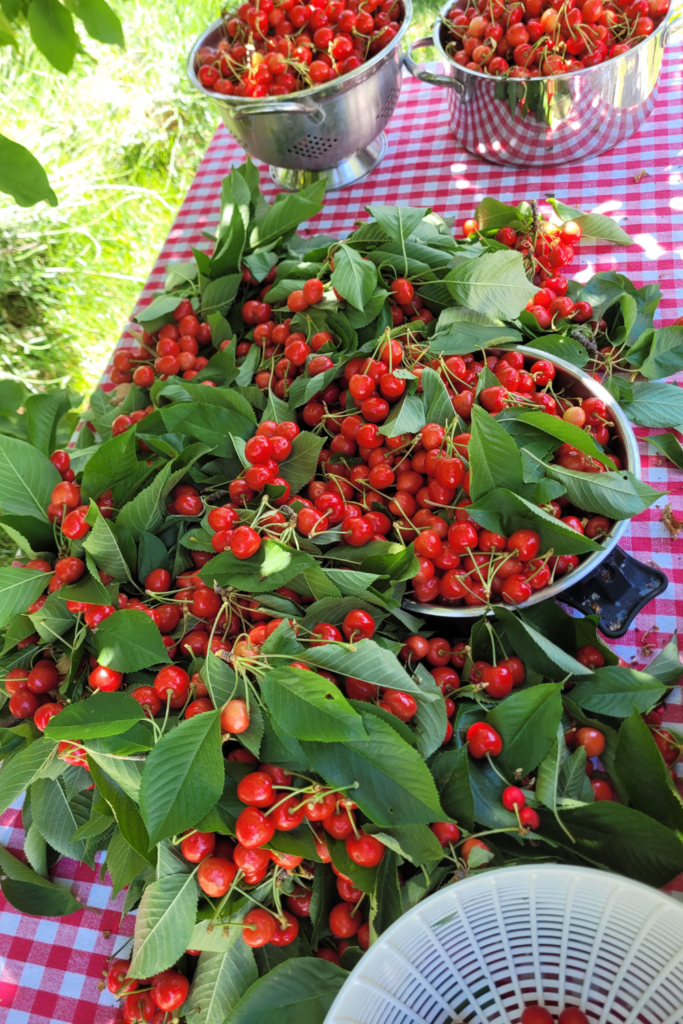
Knowing When Cherries Are Ripe
Ah, the moment of truth! How do you know when those beautiful cherries are ripe and ready for your pleasure? Look for cherries that are firm, plump, and have a rich color. Depending on the variety, they may be bright red, deep purple, or even golden.
Give them a gentle squeeze to make sure they’re not too soft or too hard. And if the birds are eyeing them with envy, it’s probably a good sign that they’re perfectly ripe! Be sure to snatch them before they do!
Harvesting Techniques for Cherries
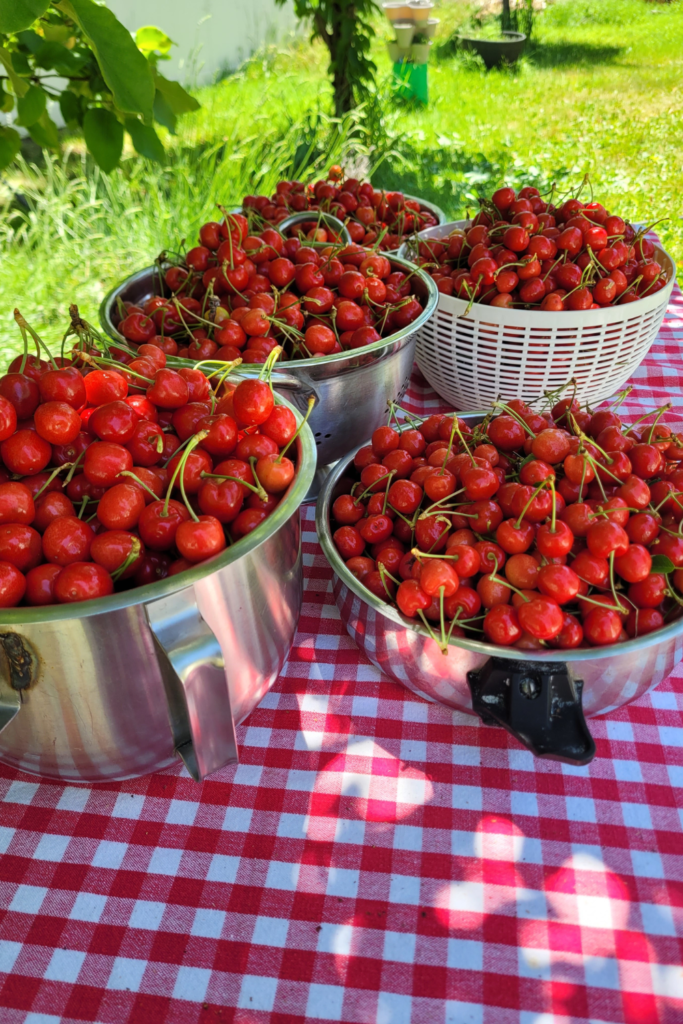
Grab your basket and get ready for the cherry harvest extravaganza! The best way to harvest cherries is by gently twisting the stem while supporting the fruit with your other hand. Be careful not to yank on the cherries, or you might end up with a bunch of stems and a bruised ego.
If you have a lot of cherries to pick, recruit some friends or family members to help. It’ll be like a cherry-picking party, but without the awkward small talk.
Harvesting My Cherry Tree

Cherry picking begins at the end of spring and the beginning of summer when the cherries are fully ripe and have a dark red or black color. Harvesting should take place within a week and be preserved immediately.
Top Picking Cherries Technique
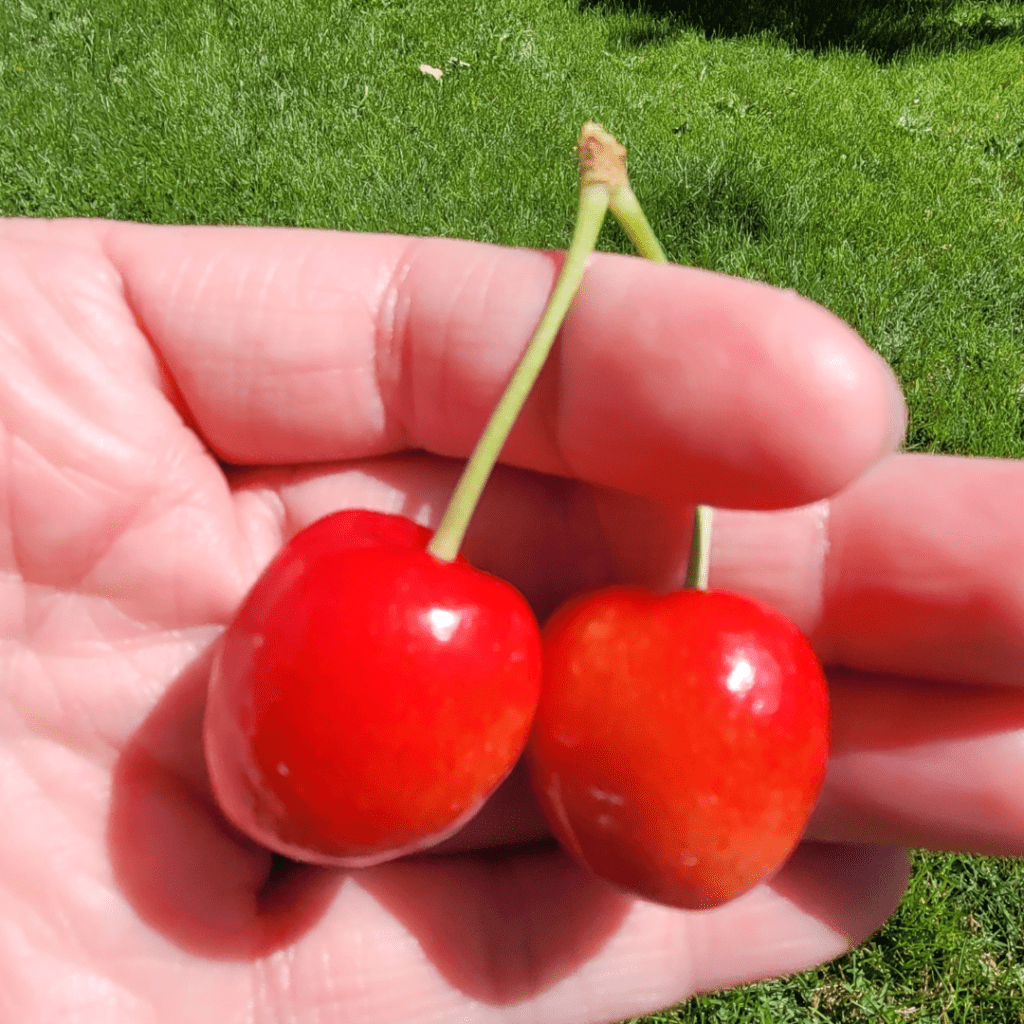
To prevent injuring the cherries and causing infection to the tree, top pick the cherry stem. Top picking the cherry stems encourages the fruit spur to fruit the following year. (In other words, leave the stem on the cherries!)
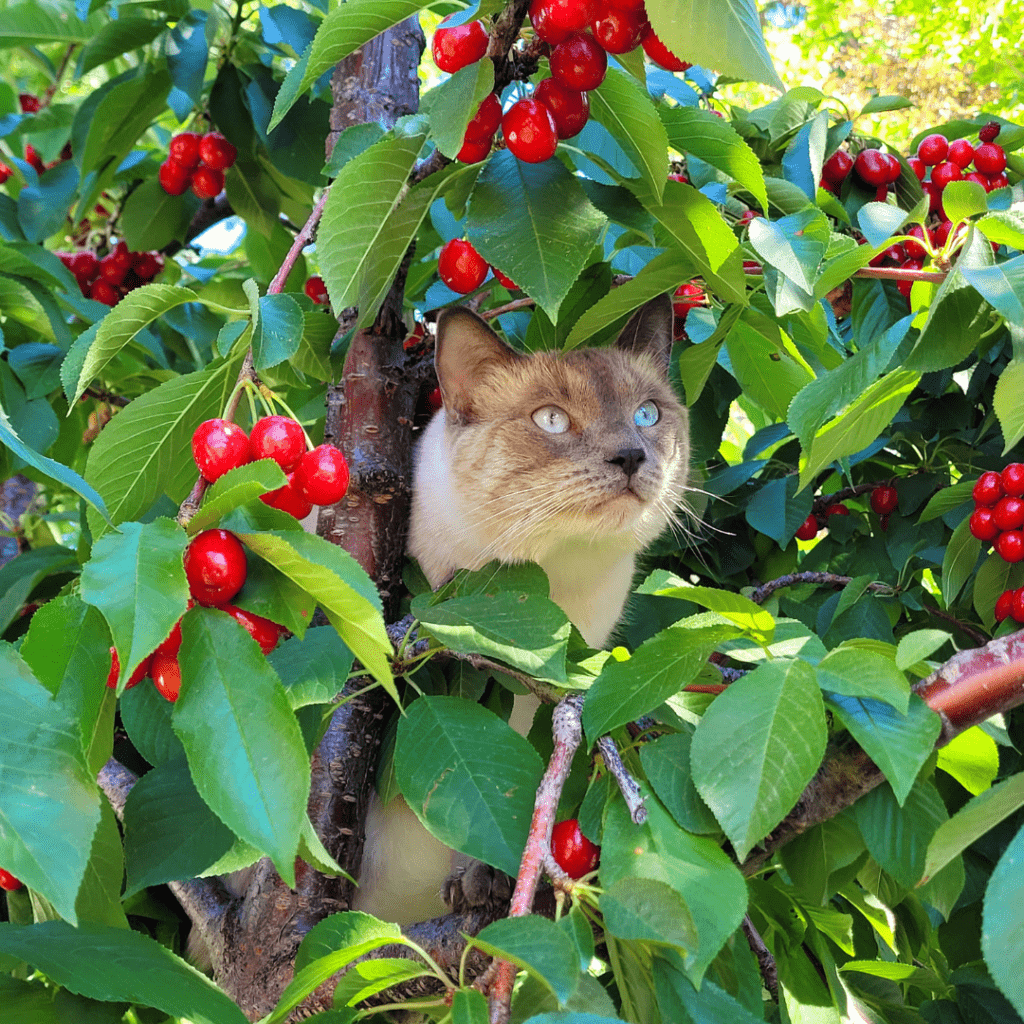
Delicious Recipes and Uses for Cherries
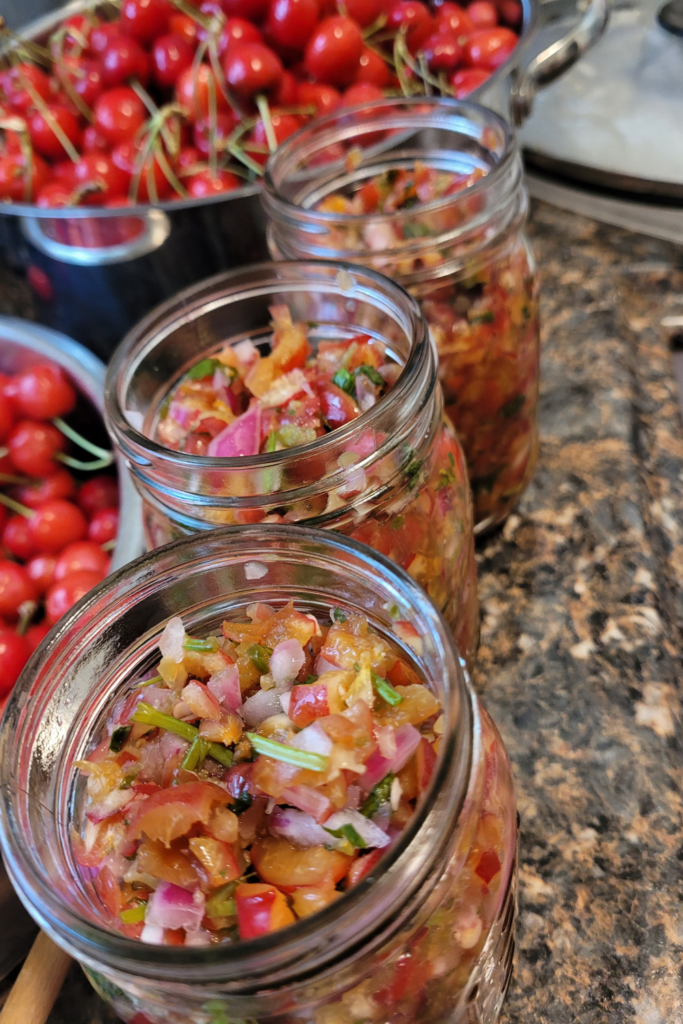
Now that you have a basket full of cherries, it’s time to put those sweet little gems to good use! Whether you’re in the mood for a classic cherry pie, a refreshing cherry lemonade, or a savory cherry sauce to accompany your roast, the possibilities are endless. You can also try drying or freezing cherries to enjoy them throughout the year. And if all else fails, just indulge in the simple pleasure of eating them straight from the tree. After all, life is just a bowl of cherries!
Cherry Recipes
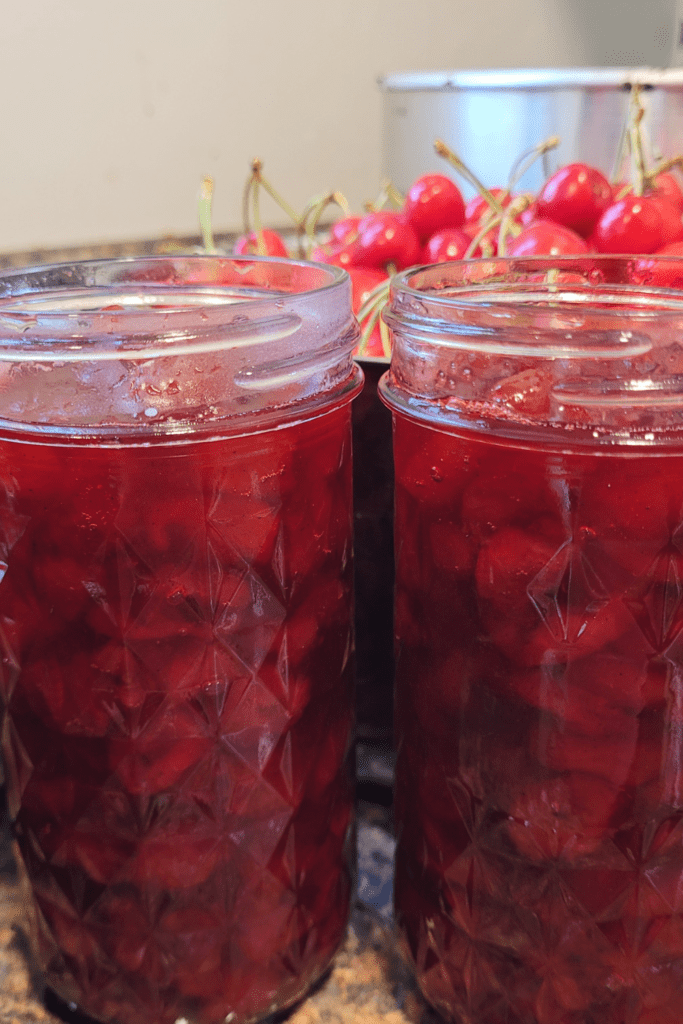
Owning a cherry has many blessings. You get to enjoy the beauty of the gorgeous spring flowers that fill out the tree and watch them fall to the ground like soft spring snow. Then you get to watch the cherries form and grow and droop the branches that are heavy with delicious, plump cherries. What are you to do with such a blessing of all those cherries?
Well, here are my cherry recipes that I have made since owning my cherry tree. My pantry is stocked with sweet canned whole cherries in syrup and cherry pie jam! I make a tasty sweet cherry bread with a cherry glaze with canned whole cherries.

Try these yummy cherry recipes to use up your cherries and enjoy your cherry tree to the fullest! You won’t be disappointed! Your cherry tree can provide many delicious recipes for your family, from cherry pie jams, vanilla cherry syrup, and of course cherry pie filling!
How to Make Sweet Cherry Bread with Cherry Glaze
How to Make and Can Cherry Pie Jam
Canning Whole Cherries: Easy Water Bath Tutorial
How to Make and Can Cherry Salsa
Cherry Tree Maintenance and Longevity
Proper Care Practices for Maintaining Cherry Trees
Like any relationship, maintaining a healthy cherry tree requires some effort. Start by providing adequate water and good drainage. Mulch around the base of the tree to suppress weeds and retain moisture.
Regularly fertilize your tree to keep it well-nourished, but don’t overdo it, or you might end up with all foliage and no fruit. And of course, keep an eye out for any signs of distress, whether it’s drooping leaves or lackluster fruit production.
Dealing with Common Issues and Challenges
Cherry trees, just like us, have their fair share of issues. From birds stealing their cherries to inclement weather wreaking havoc, there’s always something to contend with. Installing nets or scare devices can help deter feathered thieves, while adding shade cloth or windbreaks can protect your tree from harsh weather conditions.
And remember, a little bit of extra care and attention during challenging times can go a long way in keeping your cherry tree happy and resilient.
Extending the Lifespan of Cherry Trees
We all want our cherry trees to live long, fruitful lives, don’t we? To extend the lifespan of your beloved tree, focus on practicing good maintenance habits and providing regular care. Pruning, fertilizing, and protecting your tree from pests and diseases will all contribute to its longevity.
And don’t forget to shower it with love and admiration—it’s like a cherry tree spa treatment! With a little TLC, your cherry tree will be a source of joy and deliciousness for years to come.
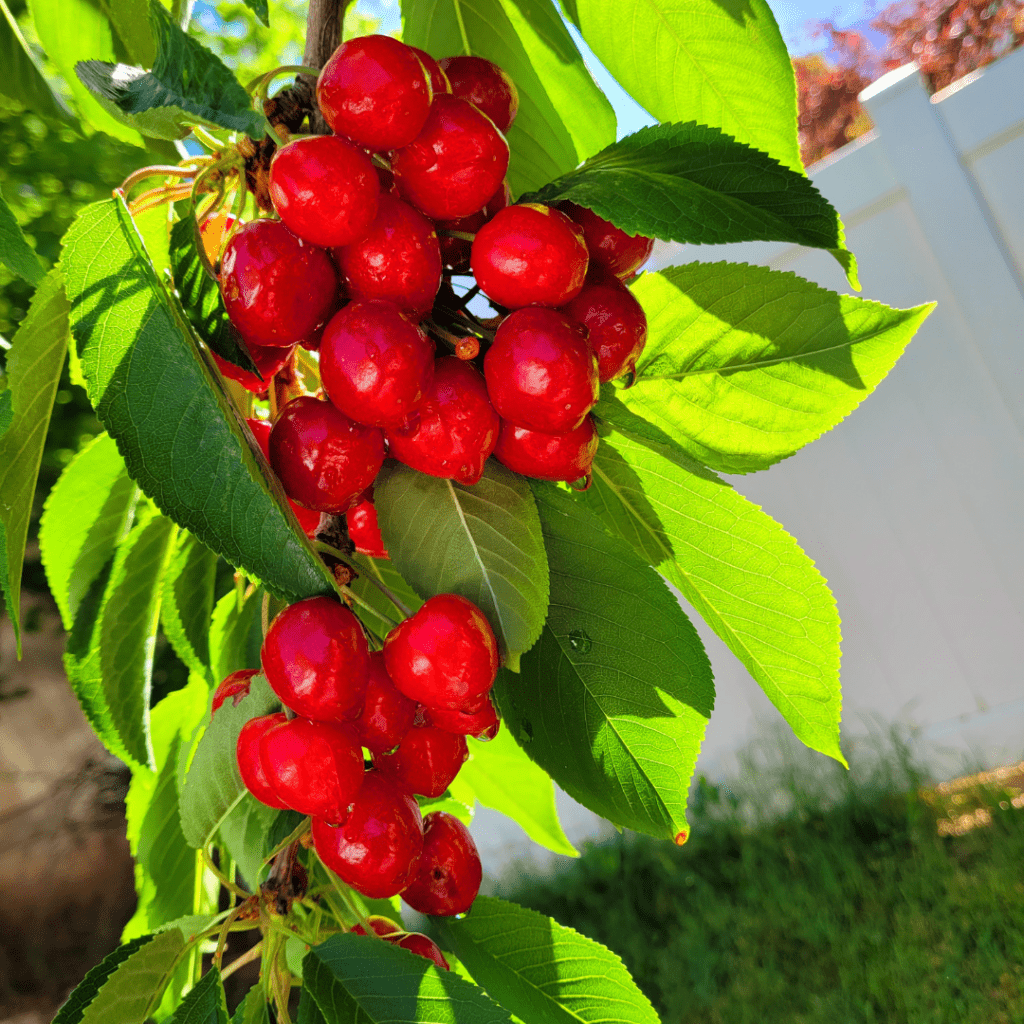
Year When Cherry Trees Bear Fruit
Cherry trees begin to bear fruit within their fourth year of life in the garden. Dwarf varieties can bear fruit within three years. Mature cherry trees produce a bountiful harvest of about thirty to fifty quarts of cherries per year, and dwarf varieties can produce about ten to fifteen quarts.
My cherry tree is a semi-dwarf variety and can produce somewhere between ten to thirty quarts of cherries per year. I aim to can my cherries in the early summer and expect about twenty quarts.
However, I will be canning cherry jam with pint jars, therefore, I expect to can about forty pint jars of cherry jam in the summer. I give a lot of cherry jam to friends and family! Also, cherry jam is great for spreading on bread and adding to oatmeal and for making hand pies.
Climate for Cherry Trees
Cherry trees prefer climates where they have a period of cold for them to enter dormancy and a warm, dry climate to grow when they wake up. I live in Northern Utah, where we have long periods of cold winters followed by hot, dry summers, which is the perfect climate for my cherry tree.
Growing Cherry Trees From Pits
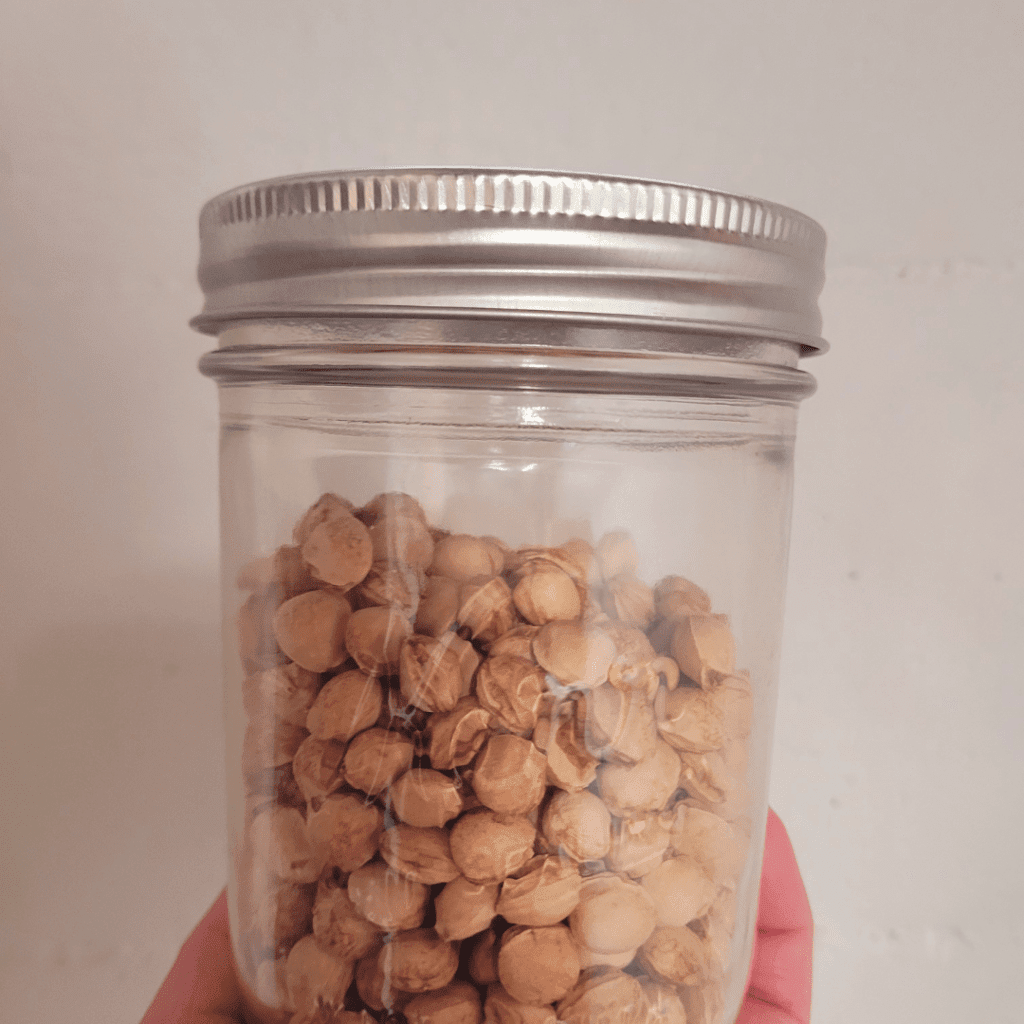
Preparing the Cherry Pits
A cherry tree can be grown from a cherry pit. To prepare the pits for growing a tree, clean the flesh of the fruit from them, and clean them by soaking them in warm water and drying them off with a towel. Allow them to air dry on a towel for a few days.
Place the pits in a mason jar and put them in your refrigerator for up to ten weeks before the last frost date to prepare for spring planting. You can keep them in the refrigerator for longer if necessary, depending on when you prepared them; however, be sure to keep them in the fridge for at least ten weeks.
This process is called cold stratification (simulating the winter season), which is necessary for the fruit tree to grow and bear fruit. For a higher success rate, be sure to prepare many cherry pits, as not all of them may sprout.
Planting the Cherry Pits
When spring arrives, remove the cherry pits from the refrigerator and bring them to room temperature (simulating the spring season). This helps bring the cherry pits out of their dormancy and ready for sprouting.
Plant them in a container, about three per space, and water regularly by keeping the soil moist, but not over-watered.
If preferred, plant the cherry pits directly in the garden, keep a close eye on them for proper care and watering, and do not allow the soil to dry out.
A Walk Around My Ripe Cherry Tree
Take a walk around my ripe cherry tree to see a full-grown backyard ripe cherry tree that could possibly be in your very own backyard! See how many cherries you can have each year just from one cherry tree!
Conclusion
In conclusion, growing and caring for cherry trees can be a rewarding experience for both the seasoned gardener and the enthusiastic beginner. By understanding the different varieties, choosing the right tree for your garden, and implementing proper planting and maintenance techniques, you can enjoy the beauty of cherry blossoms and the delicious taste of ripe cherries.
With the knowledge gained from this ultimate guide, you are now equipped to embark on your own cherry tree adventure, creating a vibrant and fruitful landscape that will bring joy for years to come. Happy cherry tree growing!

Frequently Asked Questions
1. Can I grow cherry trees in containers?
Yes, certain cherry tree varieties can be grown in containers. Choose dwarf or compact varieties suitable for container gardening. Ensure adequate sunlight, proper watering, and regular fertilization for successful growth in containers.
2. How long does it take for a cherry tree to bear fruit?
The time it takes for a cherry tree to bear fruit can vary depending on the variety and growing conditions. On average, sweet cherry trees may take 3-5 years to produce a significant crop, while sour cherry trees may start fruiting within 2-4 years.
3. How do I protect my cherry trees from pests and diseases?
Regular inspection and prompt action are key to preventing and managing pests and diseases. Implement good cultural practices such as proper pruning, removing fallen leaves and debris, and providing adequate air circulation. Additionally, using organic pest control methods and applying appropriate fungicides when necessary can help protect your cherry trees.
4. When is the best time to harvest cherries?
The best time to harvest cherries is when they are fully ripe. This can be determined by their color, firmness, and taste. Sweet cherries are typically harvested when they have turned a deep red color, while sour cherries are harvested when they turn a bright, tart red color. Always taste a few cherries to ensure optimal sweetness before harvesting the entire crop.
Summary
I hope I have inspired you to grow your own cherry tree.
If you were encouraged by this post, I invite you to check out my FREE Printables Page for fun free printables, planners, and charts.
ENTER MY FREE Printables Page HERE
I invite you to check out some more of my posts!
How to Can a Year’s Supply of Quince Jam
All About Cherry Trees: Ultimate Guide
All About Pear Trees: Ultimate Guide
How to Grow a Productive Perennial Raspberry Patch
Why You Need to Start Micro-Orcharding in Your Backyard
How to Grow a Productive Perennial Strawberry Patch
Blessings,
The Off Grid Barefoot Girl



